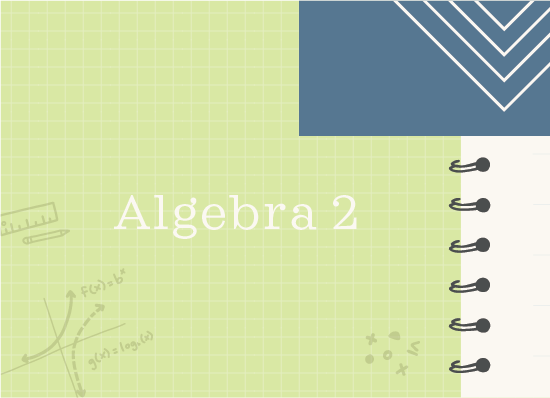Domains of composite functions
The domain of composite functions
In this lesson we’ll learn to find the domain of composite functions.
The domain of a function is the set of ???x???-values that make the function true.
Hi! I'm krista.
I create online courses to help you rock your math class. Read more.
Sometimes if you create a composite function you need to consider the domain of the new function. Often the domain of the new function is dependent on any domain restrictions on the original functions.
Remember a composite function of ???f(x)??? and ???g(x)??? is written as ???f \circ g??? or ???f(g(x))???, and is found by plugging ???g(x)??? into ???f(x)???.
The domain of a composite must exclude all values that make the “inside” function undefined, and all values that make the composite function undefined. In other words, given the composite ???f(g(x))???, the domain will exclude all values where ???g(x)??? is undefined, and all values where ???f(g(x))??? is undefined.
How to find the domain of a composite function step-by-step
Take the course
Want to learn more about Algebra 2? I have a step-by-step course for that. :)
Example of finding the domain of a composite
Example
What is the domain of ???f \circ g????
???f(x) = x^2 -3???
???g(x) = \sqrt{x+9}???
First, find the domain of ???g(x)???. The expression ???\sqrt{x+9}??? is undefined where ???x+9??? is negative. For example, if ???x=-10???, then ???x+9??? is ???-1???. Likewise, if ???x??? is any number less than ???-9???, ???x+9??? will be negative. However, ???-9??? itself is okay because ???\sqrt{x+9}??? will then be ???0???, which is not undefined.
The domain of ???g(x)??? then is all real numbers ???x??? such that ???x\geq-9???.
The composite function is
???f \circ g = f(g(x)) = \left(\sqrt{x+9}\right)^2-3???
???f \circ g = f(g(x)) = x+9-3???
???f \circ g = f(g(x)) =x+6???
For this simple binomial, no real numbers are excluded, so its domain is all real numbers. But because the domain of ???g(x)??? excludes ???x<-9???, those values also have to be excluded from the composite ???f(g(x))???.
That means the domain of ???f(g(x))??? is ???x\geq-9???.
Let’s try another example.
no real numbers are excluded, so its domain is all real numbers.
Example
What is the domain of ???f \circ g????
???f(x) = \frac{2}{2x+4}???
???g(x) = \frac{3}{x-5}???
First, find the domain of ???g(x)???. The expression ???3/(x-5)??? is undefined if the denominator is ???0???. That means ???x =5??? isn’t in the domain of ???g(x)???. Therefore, the domain of ???g(x)??? is all real numbers ???x??? such that ???x \neq 5???.
The composite function is
???f \circ g = f(g(x)) = \frac{2}{2\left(\frac{3}{x-5}\right)+4}???
???f \circ g = f(g(x)) = \frac{2}{\frac{6}{x-5}+4\left(\frac{x-5}{x-5}\right)}???
???f \circ g = f(g(x)) = \frac{2}{\frac{6+4x-20}{x-5}}???
???f \circ g = f(g(x)) = \frac{2}{\frac{4x-14}{x-5}}???
???f \circ g = f(g(x)) = 2\left(\frac{x-5}{4x-14}\right)???
???f \circ g = f(g(x)) = \frac{2x-10}{4x-14}???
???f \circ g = f(g(x)) = \frac{2(x-5)}{2(2x-7)}???
???f \circ g = f(g(x)) = \frac{x-5}{2x-7}???
For this rational function, any numbers that make the denominator ???0??? are excluded from the domain.
???2x-7=0???
???2x=7???
???x=\frac{7}{2}???
Putting both exclusions together, the domain of the composite is all real numbers except ???7/2??? and ???5???. So,
???x \neq \frac{7}{2},\ 5???






